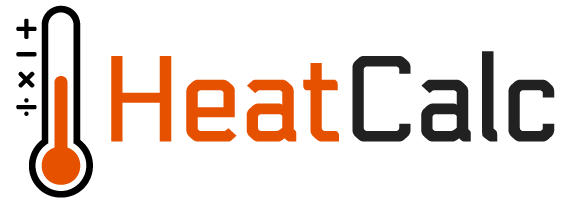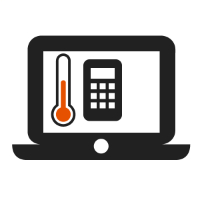Heat recovery project economics
We have witnessed many misconceptions about waste heat project economics because waste heat doesn't line up with typical energy metrics. Read more to find out why.
Waste heat recovery benefits
The first place to start with any project is to quantify the benefit from it. There are 3 primary drivers that enable revenue or savings from the heat recovery project:
1) Quantity of usable heat
The more usable heat that is available, the more electricity, cooling, or heat transfer that can be created. We say "usable" because heat at lower temperatures is often not usable for power generation, cooling, and some heat utilization cases.
Our Calculator can help determine how much heat is usable and what can be generated with it.
2) Usable operating hours
There are 2 parts required for usable heat operations:
1) Operating hours of the heat source
2) A demand for the heat utilization (heating, cooling, or power generation)
The sites with the best economics typically have high heat source operating hours (8,000 hours per year = 91% of the time) and a use for that heat for the majority of that time.
3) Value of energy produced
This varies by use of the heat source. If producing power, the more valuable the electricity (i.e. higher price per kWh), the better the economics. Similarly, the higher the price paid for cooling or heating, the more valuable the heat utilization is going to be.
If we know the answers to 1,2, and 3 above, we can simply multiply them to get the annual expected benefit.
R = W x H x V, where:
R = Annual revenue or savings from the project
W = the quantity of work done. With electricity generation, this is the average kW produced.
H = the average annual usable operating hours of the equipment
V = the value of the energy produced. With electricity generation, this is $/kWh
For example, when calculating revenues for a heat to power project, use the following:
Revenue or savings = [average electrical output] x [annual operating hours] x [price of electricity]
$120,000 = [100kW] x [8,000] x [$0.15/kWh]
Costs of a heat recovery project
Like any project, the benefit of heat utilization should be weighed against the costs to install and operate the project.
Initial costs for waste heat projects can often seem large. But remember, these up-front costs will often be spread out over 10-20 years. Some additional things to consider:
- Include all the components of the site. Visit the Making A Project Happen page for more details on all the components.
- Get estimates on all of the logistical items, including taxes, import duties, shipping, permit fees, etc.
- Try to plan for when the heat source is 'down' or not operating. This ensures no loss of revenue for the prime heat generator.
- Financing options and some vendors offering 'pay as you save' models can help spread the costs over longer periods of time.
Waste heat utilization projects typically have low operational costs because:
- the fuel (heat) should be free or close to it.
- projects should operate continuously, or for the majority of the year.
- Many systems don't have the combustion and lubricants and other aspects of heavy machinery that require significant overhauls and maintenance.
Additional benefits
There are other potential ways to make waste heat utilization projects more attractive:
Incentives... these can come in the form of grants, feed-in-tariffs, accelerated depreciation, carbon offsets, self generation incentives, and many other avenues. It's best to do some research about what may be available and can qualify in your area.
Energy price hedging... by using heat from ones existing facility, a site can often displace the reliance on an external form of energy. For example, it may displace all or a portion of a boiler generating heat, or an air conditioner's electricity use.
Reduction of site parasitic losses... some industrial facilities must bag or filter their exhaust heat production. However, filters and bags often require lower temperatures to function. So, facility owners use heat fans, blowers, heat exchangers and other pieces of equipment (most of which require water and/or electricity) to reduce the temperature of the exhaust. Putting that heat to a good use can offset the parasitic losses associated with it.
Creating local jobs... by using heat locally, the installation and operation of the equipment require people to install and maintain.
Pulling it together
For pretty much every project we have evaluated, we have made a pro-forma model to demonstrate the economics. Economic models can be illuminating, but they can also be misleading if not put together appropriately. In our experience, the best models capture the assumptions clearly and are easy to update when new information is discovered.
There are many resources and examples online to learn from and utilize to build a model in excel, google sheets, or another similar program.






